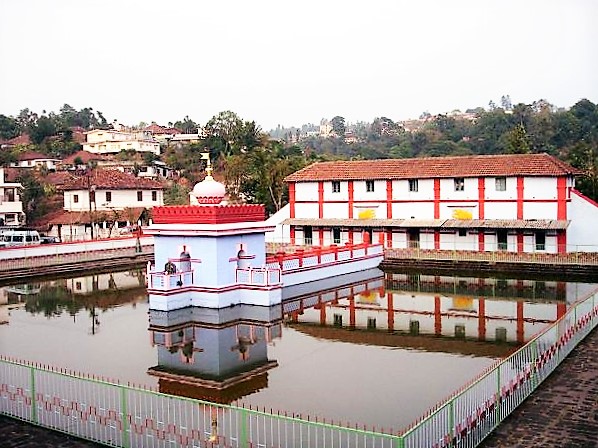Kakkada Padinett is a feast festival all around the Kodava/Coorg region. It is observed on the 18th day of the Kakkada month in the Kodava calendar(called Ashada in most of the Hindu calendars).
The month of Ashada(mid monsoon) in most of the Hindu calendars is considered to be inauspicious. However in Kodagu the 18th day of this Kakkada month is celebrated with great enthusiasm.
The transport facilities were very poor in those times. The rivers used to overflow and their would be floods in the region, forcing the people to stay at home and not able to move around anywhere else. So the people used to stack food and firewood for themselves, their cattles and pets.
In all these bad conditions there was one good thing in Kodagu region and that was a medicinal plant called Madd Toppu. It is a seasonal plant which has medicinal values. Kodavas thus, found a reason for celebration. Every household celebrates the 18th day of this month as a family feast festival which is called Kakkada padinett. The guests are served delicious dishes specially made from the seasonal herb called Madd Toppu. In other parts of Karnataka they call naati soppu in Kannada.
The most important thing about Kakkada Padinett festival is the herb Madd Toppu. It is also called Kurunji toppu. It is a medicinal plant. It is believed that the leaves of this plant contains 18 types of medicinal herbs.
All the dishes prepared from Madd thoppu are prepared from the extract of its leaves which is obtained by boiling them thoroughly.
You must be wondering, if it is that good why they donot eat it regularly throughout the season? No it is not eaten all the time. First of all it is not eaten directly and secondly its curative effect is said to be at the highest on the 18th day of the Kakkada month. Thus, this day is celebrated as Kakkada padinett.
Yella Kodavak Kakkada Padinett shubhashaya!
Best wishes to all Kodavas on Kakkada Padinett!
The month of Ashada(mid monsoon) in most of the Hindu calendars is considered to be inauspicious. However in Kodagu the 18th day of this Kakkada month is celebrated with great enthusiasm.
Kakkada month in Kodava calendar
Out of all the 12 months in a Kodava calendar, Kakkada is the fourth month. In all other calendars this month is called Ashada. This month usually falls between july 17th and August 16th. Rains pour heavily in this month and sky is always covered with dark clouds and the weather is biting cold. The people from the bygone times used to prepare themselves and their houses prior to the start of this month. They used to clean their houses, repair the dripping roofs, clogged drains, leaky faucets and clean the cattle sheds. After the Kakkada month, comes the harvesting season, so the people would repair their harvesting tools too.The transport facilities were very poor in those times. The rivers used to overflow and their would be floods in the region, forcing the people to stay at home and not able to move around anywhere else. So the people used to stack food and firewood for themselves, their cattles and pets.
In all these bad conditions there was one good thing in Kodagu region and that was a medicinal plant called Madd Toppu. It is a seasonal plant which has medicinal values. Kodavas thus, found a reason for celebration. Every household celebrates the 18th day of this month as a family feast festival which is called Kakkada padinett. The guests are served delicious dishes specially made from the seasonal herb called Madd Toppu. In other parts of Karnataka they call naati soppu in Kannada.
The most important thing about Kakkada Padinett festival is the herb Madd Toppu. It is also called Kurunji toppu. It is a medicinal plant. It is believed that the leaves of this plant contains 18 types of medicinal herbs.
 |
| Celebration of Kakkada Padinett. Photo courtesy: ww.Coorg.com |
You must be wondering, if it is that good why they donot eat it regularly throughout the season? No it is not eaten all the time. First of all it is not eaten directly and secondly its curative effect is said to be at the highest on the 18th day of the Kakkada month. Thus, this day is celebrated as Kakkada padinett.
Yella Kodavak Kakkada Padinett shubhashaya!
Best wishes to all Kodavas on Kakkada Padinett!










.jpg)


















